Tag archives: materials science
Prizewinning book gives materials science a chance to shine
By Margaret Harris

Mark Miodownik last night.
Materials scientist and first-time popular-science author Mark Miodownik was all smiles last night as his book Stuff Matters scooped one of the UK’s top non-fiction awards, the Royal Society Winton Prize for Science Books. The book, an engaging and often highly personal look at some of the everyday materials that make modern civilization possible, was the unanimous choice of the five-member judging panel, coming top in a strong shortlist that also included a history of general relativity, a memoir about cancer and an analysis of the role played by physicists in Nazi Germany.
Miodownik picked up his award – a rectangular prism that looked like glass but was, he informed us, actually made of acrylic – at the end of a ceremony in which he and four of the other shortlisted authors appeared on stage at the Royal Society’s London headquarters to read passages from their books. Earlier in the evening, there had been an audible buzz in the room as Miodownik read from the introduction of Stuff Matters, in which he describes how, as a teenager, he was slashed with a razor blade during an attempted mugging, and how he became obsessed with materials and their properties afterwards. (He is now a materials engineer at University College London.)
Physics road trip through the north-east of Brazil

Susan Curtis (left), Sarah Andrieu (centre) and Alvaro Ferraz admire the new IIP building in Natal.
By Susan Curtis
This week, several of us from IOP Publishing have been visiting the north-east of Brazil. Our prime focus has been the annual meeting of the Brazilian Materials Research Society in João Pessoa, where we launched a new Science Impact report highlighting materials research in Brazil. But during the week I travelled to Natal with my colleague Sarah Andrieu to visit Alvaro Ferraz, director of the International Institute of Physics (IIP).
View all posts by this author | View this author's profile
Physics World tackles the valley of death
By James Dacey
Many academics believe that they have an idea in them that could lead to a nifty new technology – and make them some cash in the process. But there is a world of difference between discussing an idea in the departmental common room and actually launching a new product to fit into an unexploited niche in the market. One of the biggest challenges that start-up companies face is known as the valley of death, which we have illustrated for you here with this quirky animation.
The voice you hear is that of Stan Reiss, who works for the international venture capitalist firm Matrix Partners. He explains how the valley of death is a metaphor for the financial challenges faced by a spin-off company in the early stages of its development. In this phase, the firm may have a prototype for a product but it might not have the income or the capital to comfortably survive and grow. Often, the company simply runs out of money and falls by the wayside. “There’s a lot of dead bones and skeletons at the end of that valley,” says Reiss.
Setting the standard for Brazilian materials science
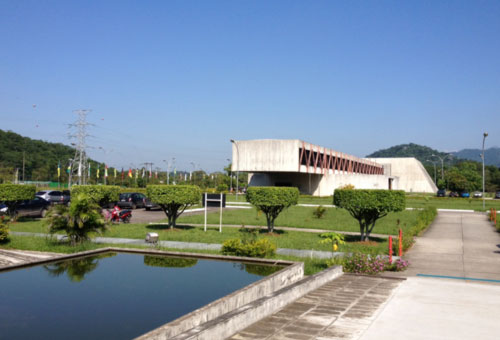
Long and low – Inmetro, Brazil’s standards lab.
By Michael Banks in Rio de Janeiro, Brazil
As part of my road-trip round Brazil, I visited Inmetro – the Brazilian standards lab. Located around 50 km north of Rio de Janeiro, Inmetro certainly has the feeling of being well away from the hustle and bustle of one of Brazil’s major cities.
The first thing that you notice when you enter Inmetro’s vast campus is that the buildings have a unique architecture (see above). The bunker-like structures are built in such a way that they are protected from the Sun, which can deliver 40 °C temperatures in summer. (Thankfully, I am here in autumn, but the temperature is still a warm 30 °C.)
Inmetro’s campus was built about 40 years ago with the help of the PTB – the German standards lab. The buildings were also specially designed so that the labs are vibrationally separate from the offices. So, any wild jumping around at your desk won’t affect the sensitive measurements in the lab.
View all posts by this author | View this author's profile
Boosting innovation in Brazil
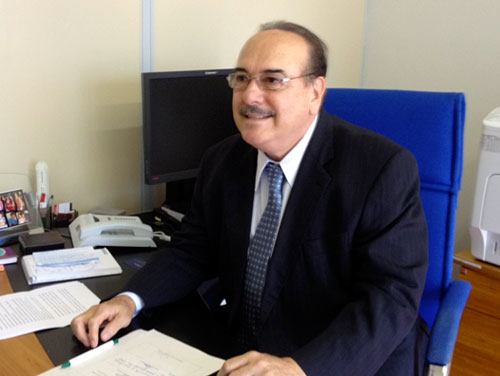
FAPEMIG boss Evaldo Ferreira Vilela.
By Michael Banks in Belo Horizonte, Brazil
I’m writing this while on a week-long road trip across Brazil to gather information for a new report that IOP Publishing, which publishes Physics World, is producing for the Brazilian Materials Research Society.
While on my trip, I have visited a number of institutes that focus on materials research. But I also had the chance to talk a bit of policy when visiting FAPEMIG – the main state funder for research in Minas Gerais, which is the second most populous state in Brazil.
In Belo Horizonte, which is the capital of Minas Gerais, I met Evaldo Ferreira Vilela, who is director of science, technology and innovation at FAPEMIG.
View all posts by this author | View this author's profile
Cracking the earthquake lights mystery and out-of-this-world technology
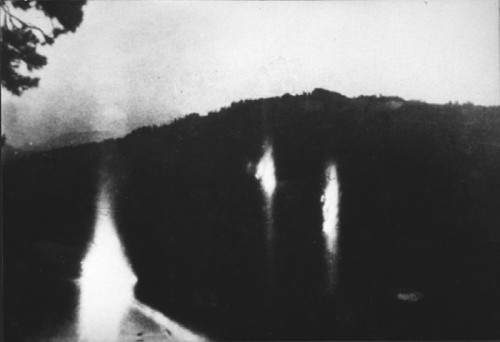
A photograph of streams of lights taken in 1977 near Brasov, Romania, about 100 km from the epicentre of a M 7.2 earthquake. (Courtesy: Seismological Society of America)
By Tushna Commissariat
In case you missed it, I was at the APS March meeting in Denver, Colorado last week and I was blogging about a whole host of interesting talks and sessions that I attended. Although I am back in Bristol now, there were one or two other talks that I thought covered some very interesting physics, so here’s a catch-up.
Slip slidin’ away
Seasoned physicsworld.com readers will remember that earlier this year, we featured a rather intriguing story on the phenomenon of earthquake lights – the mysterious and unpredictable glowing lights that seem to appear before some earthquakes. First documented in the 1600s and seen as recently as the Fukushima earthquake of 2011, the “unidentified glowing objects” add to the long list of possible earthquake precursors, and so are of interest. The study that we wrote about in January looked at 65 well-documented events of such lights and concluded that they may occur thanks to a particular type of geological fault – a subvertical fault – causing the earthquake.
Embracing the materials world
By James Dacey
Materials research is enjoying a new golden age. The hit parade of supermaterials that has been discovered in the relatively recent past is extensive. It includes the likes of high-temperature superconductors, quantum dots, bucky-balls, nanotubes, aerogels, silver nanowires and graphene. Meanwhile, new approaches to the commercialization of materials – such as the recent Materials Genome Initiative in the US – are improving the processes by which new materials are transferred from the science lab to practical applications in the real world.
In conjuction with these new discoveries, materials scientists have also made dramatic improvements to the tools they have available for studying and manufacturing materials. Here, the list of advances is seemingly endless. Researchers can now simulate, image and analyse materials with far more accuracy than ever before. Developments in production methods – such as the advent of 3D printing – are also enabling researchers to scale up their new materials with greater ease.
View all posts by this author | View this author's profile
Meet the engineers who talk to aeroplanes
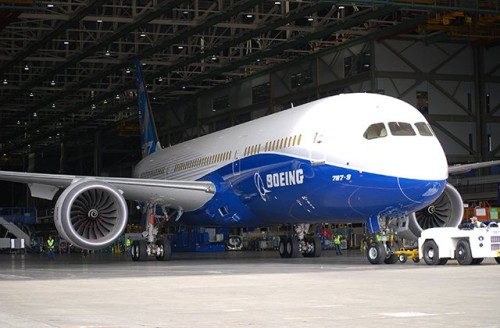
Fancy a chat with this Boeing 787 Dreamliner? (Courtesy: Boeing)
By Ian Randall
For most people, it’s considered rather eccentric to talk to inanimate objects – and if the objects seem to be talking back, then it’s probably time to seek medical advice! Not, however, for Alex Ng and his colleagues at the University of Adelaide in Australia, who are working on a way to “chat” to buildings, bridges, aeroplanes and other structures, so they can report back on their structural health.
View all posts by this author | View this author's profile
How mussels stretch but don’t snap
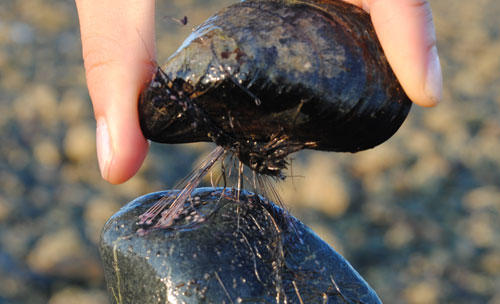
Mussel attached to a rock in the Boston area. (Courtesy: Zhao Qin)
By James Dacey
Ask any old sea dog and they will tell you the same thing – mussels are resilient little blighters that’ll cling onto yer ship no matter how fast ye sail. The secret behind the ability of mussels to remain tightly attached to surfaces has now been uncovered by a group of researchers at Massachusetts Institute of Technology (MIT) in the US.
Whereas barnacles fix themselves tightly to the surfaces of rocks, mussels deploy a different form of adhesion. They dangle from surfaces by a series of fine filaments known as byssus threads made from a protein closely related to collagen – a major constituent of skin and bones. The biological explanation for this behaviour is that it allows the mussels to glide through the water increasing the amount of nutrients they can absorb.
View all posts by this author | View this author's profile